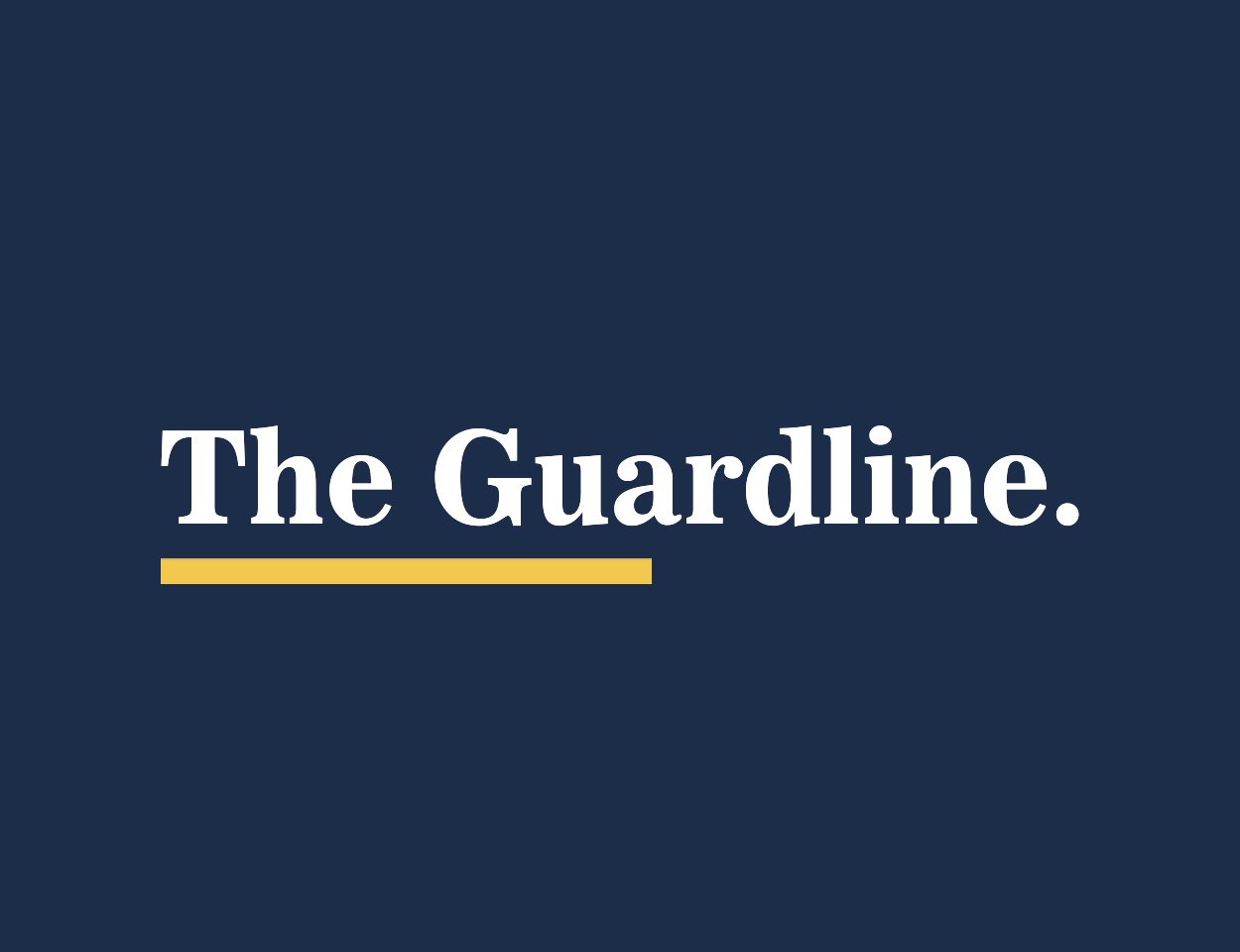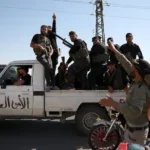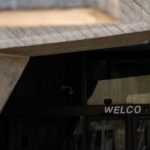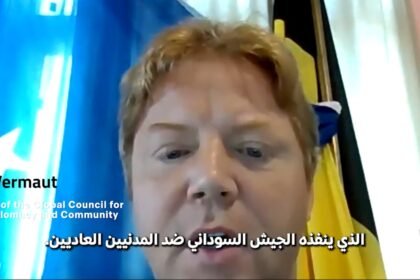The Guardline
Israel killed six journalists with an airstrike on a press tent in Gaza City last month. Among the dead in the August 10 attack were Al Jazeera correspondent Anas Al-Sharif and his colleague, photojournalist Mohammad Nofal.
In the days leading up to the killing, I had been speaking with Mohamed’s brother and fellow photojournalist, Ibrahim Nofal, 27, about what it’s like to be a photojournalist in Gaza today, to witness horror and massacres.
“This is the only thing I know how to do,” he said. “Every person here has a role in this war. Mine is to document. If I don’t photograph it, this moment will never exist.”
His job may be the most dangerous in the world. Israel killed five more journalists on August 25, in a “double-tap” missile strike on Nasser Hospital in Khan Younis that appeared to be designed to kill the rescue workers and journalists who responded to the initial strike.
The day after Israel killed his brother, I asked Ibrahim what he misses most. He immediately responded: “My mother and my brothers Omar and Mohammad, who were killed in this genocide. I had a life in Turkey when I was traveling; I had plans. But none of it matters now. Only my mother and brothers do.”
I and my own brother, Ali Skaik, spoke with Ibrahim and five other photojournalists in Gaza about their daily lives and what the deadly task of documenting the genocide means to them. We also asked them to share one photo that is close to their hearts. I fear that any of them may join the ranks of the 221 other journalists that Israel has killed in Gaza in the past two years. I fear that I and my brother could be killed any day too, as the Israeli military advances closer to our home.
Ibrahim is still working, despite the risks. He’s come close to death before. “Once, a gas canister exploded beside me — I thought it was the end. Another time, a house we were documenting was hit, and everyone around me was injured,” he said. His home was bombed on October 30, 2023, and five of his cameras were destroyed.
His photos have not only traveled far, they have changed lives: Some of those he photographed were able to leave Gaza for medical treatment because the world saw their suffering.
He keeps documenting. “The camera is my weapon,” he said. “It respects me because I respect it. Through it, I make the world see Gaza and its people.”
Documenting the genocide is not a choice — it is a responsibility, carried out with a sense of duty and love for our homeland and people. In Gaza, every image carries a cost, and every photographer bears both the burden of memory and the duty of witness.
“Realities That Cannot Be Hidden Behind Propaganda”
Abdul Hakim Abu Riash, 37, captured a searing photograph of starvation in Gaza: the image of 2-year-old Yazan Abu Foul in the Al-Shati refugee camp, suffering from severe malnutrition.
He said he was not surprised when American media outlets, biased in favor of Israel, tried to deny or discredit his work and the work of his fellow Palestinian journalists.
“The reality, however, is far harsher than what has been reported,” Abu Riash said. “During the most recent closure of the crossings, I myself lost 13 kilograms — my weight dropped from 67 to nearly 53” kilograms, or from 147 to 117 pounds. Food remains scarce, with prices 10 times higher than before the Israeli restriction of food. “If this is my condition as an adult, one can only imagine the plight of children, especially those with chronic illnesses who rely on specific nutritional needs,” he said. “Their suffering is far greater, and under this blockade and the denial of food entry, their situation is only worsening — leading already to the deaths of dozens of children.”
“I risk my life and everything I own to share realities that cannot be hidden behind propaganda,” he said. “We’ve had to learn new lessons on how to adapt in the field, to keep working under almost impossible conditions, and to find ways of ensuring our message still reaches the world.”C
He traces his love for photography back to his boyhood in Beit Lahia in the northern Gaza Strip. His first mobile phone with a camera, bought in 2005, felt like a miracle, he said. He was capturing photos of nature in Beit Lahia, sunsets, and daily life scenes. By 2011, after the first war on Gaza, he turned his passion into journalism, determined to document the truth.
For Abu Riash, images touch emotions before they reach the mind. “A photograph speaks to everyone — even the blind can feel its weight through silence. It’s the world’s only common language,” he said.
One particular image left a mark on Abu Riash: a photograph of a young girl embracing the bodies of her family members, killed in an Israeli airstrike on their home in Deir al-Balah. The shock was etched on her face, her grief uncontainable. “Every photo I take is a witness for history. I want the world to see the truth: the suffering of my people and their resilience. Nothing less,” he said.
“The Truth Is Our Weapon”
For Ayman Majed al-Hessi, 32, photojournalism was imposed on him. He studied electronics engineering and Islamic sciences before life pushed him into the media. Since 2018, he has worked with Al Jazeera Mubasher and captured beauty and wars, drawn by the belief that images have more power than words. “When I photograph, I’m not documenting strangers. I’m documenting my people, my father, my mother, my siblings, and my neighbors,” he said.
He has lived through multiple wars, but the current one has been different. He has been injured three times since October 2023, the first during the early days of the war while covering Al-Shati refugee camp. “I moved from being a reporter to a photojournalist overnight,” al-Hessi recalled, “but also to a survivor.”
His cameras and equipment were destroyed when his family home was bombed. With no tools, he resorted to a cheap Xiaomi phone, yet even from that device, he broadcast some of the most haunting images of Gaza’s devastation. One of al-Hessi’s widely circulated images is the targeting of journalist Ismail Al-Ghoul. After photographing a massacre, the images linger in al-Hessi’s mind, preventing restful sleep.
“The Israeli occupation tries to silence us. They accuse us of using artificial intelligence when we show famine,” al-Hessi added, “they close our social media accounts and keep threatening us. But our responsibility is to show the world what is happening. The truth is our weapon.”
“Images are stronger than texts,” al-Hessi said. “If I describe a flower, you’ll imagine one thing. But if I show it, the truth is undeniable. The occupation knows this. That’s why they fear our lenses.”
There are many images that have stayed with al-Hessi, but the harshest of all was the moment his brother Akram was killed. “I was filming the aftermath of an airstrike on the Shati refugee camp. People around me were shouting his name: ‘Akram, Akram!’ When I reached the site, I found my brother Akram lying lifeless, and my father clutching his body, screaming in anguish,” remembered al-Hessi.
The weight of loss bleeds into his words. He has lost his brother, his uncle, and 50 close friends. “I miss everything,” he admitted. “Our homes, our places, the people we lost.” Yet still he photographs, because if he doesn’t, no one will know. “Every photo is not just for history,” he said. “It’s for my family, my neighbors, my people.”
“Before, I Looked for Beauty and Daily Life”
Suhail Nassar, 30, is a photojournalist who used to capture Gaza’s hidden beauty: the laughter of children, sunsets over the Mediterranean, fleeting moments of joy. Photography began as a hobby for him, until he became a photojournalist to show the world how the people of Gaza live.
Since October 7, 2023, his lens has shifted. “Before, I looked for beauty and daily life. Now, everything I shoot is death, hunger, and ruins,” Nassar said. Direct bombardment, lack of supplies, and the absence of safety anywhere are great risks for photojournalists in Gaza. Yet the worst risk for them is becoming a target simply because of carrying their cameras. “There is no true protection here; you try to pick safe angles, move quickly, and keep your eyes on all directions.”
“You don’t really deal with the trauma,” Nassar said. “You carry it with you. The pictures stay in your head, stronger than any archive.”
But he feels compelled to document reality as it is. “If we do not document, no one will know what happens to us. Silence erases us. I photograph so that no one can ever say, ‘We didn’t know,’” Nassar said.
“These Moments Break You”
Anas Fteiha, 31, is a photojournalist from Gaza who works for the Turkish Anadolu Agency. Fteiha never imagined that his profession would demand such sacrifice. He moves constantly between hospitals, bomb sites, and displacement camps.
He recalls one haunting moment: a little girl who had lost both her arms. When another explosion thundered nearby, her instinct was to cover her ears — only to realize she no longer could. “These moments break you,” he admitted. “But they also remind you why you must keep going.”
“A photo invades your consciousness before you even ask. People may forget articles they read, but they will never forget an image,” Fteiha said. He is currently suing global publishing giant Axel Springer for an article in their German tabloid, BILD, that accused him of being a Hamas propagandist. Axel Springer also owns U.S. publications Politico and Business Insider.
The greatest challenges are the lack of safety, frequent electricity and internet outages, and the difficulty of reaching event sites amid continuous bombardment. “I try to separate work from emotions, but it is extremely difficult. Sometimes, after shooting, I feel an internal collapse. I console myself with the thought that what I do has value and meaning, and that my pain cannot be compared to the suffering of those I document,” recounted Fteiha.
There are no “neutral zones” in Gaza; every area is dangerous. “The greatest danger is being directly targeted. Many colleagues have been injured or killed while covering events,” Fteiha said. He doesn’t want the world to see Palestinians as just a political issue, but as fathers, mothers, and children who deserve dignity.
He described his mission as more than work — it is duty. “Every image I capture might become a voice for the voiceless and could help convey the suffering of people who would otherwise remain invisible or ignored,” he said. “If we stop documenting, who will show the world what’s happening here in Gaza?”
“Louder Than Words”
Motasem Abu Aser, 30, is a documentary filmmaker and short story creator.
Photography began as an obsession for him. From childhood, he felt drawn to the camera. His heart always belonged to visual storytelling. After surviving a near-fatal head injury while covering the Great March of Return in 2018, he refused to stop. “People thought I would quit journalism after that, but the fear was erased. Nothing could scare me anymore,” he asserts.
His work on “The Night Won’t End,” an Al Jazeera documentary that included the story of 6-year-old Hind Rajab, trapped under bombardment, became one of his most powerful works. “When you film in the moment, you capture history as it burns. That is why our work has meaning,” he highlights.
Since October 7, his days have blurred into endless hours of work. He rarely sleeps, sometimes only half an hour at a time; he feels as if he works 24 hours a day. “As a filmmaker, I don’t just hold a camera — I carry images in my mind constantly. Sleep is fleeting; even with eyes closed, my mind remains alert,” he recounts.
At the Anan family massacre near Saraya Street in December 2023, Abu Aser was the first to document the atrocity. Soldiers lined women and girls on a billiard table, bound them, and shot at them randomly. Men were trapped under stairs and exposed to explosives, killed slowly. “Images always speak louder than words. Often, a photo alone suffices; a caption may not even be needed,” said Abu Aser.
